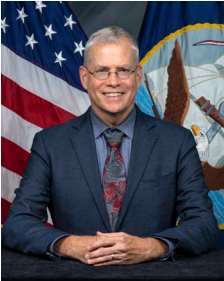WILLIAM BURNETT
Director
National Data Buoy Center

Dr. William Burnett is the Director of the National Data Buoy Center, ensuring the nation's maritime safety by successfully operating a large array of moored ocean buoys that observe, report and disseminate in real-time atmospheric, oceanographic, climate and tsunami measurements throughout the world's oceans. He leads a large government/industry staff at the Stennis Space Center located along the Mississippi Gulf Coast. Previously, as the Technical Director to the Commander, Naval Meteorology and Oceanography Command/ Task Group 80.7, he provided technical direction and oversight for a fleet of six survey ships, 2,000 civilian and military personnel and a budget over $300 Million. Dr. Burnett also served as a Computational Technology Area Leader in Climate, Weather and Ocean for the Department of Defense's High Performance Computing Modernization Program.
Prior to being promoted to the Senior Executive Service in January 2012, Dr. Burnett worked at the National Data Buoy Center, recognized as a world leader in providing operational, real-time marine observations by being named the world's first Regional Marine Instrumentation Center. Dr. Burnett also served on the International Tsunami Commission and as the U.S. National Representative to the World Meteorological Organization's and Intergovernmental Oceanographic Commission's Data Buoy Cooperation Panel.
Before joining the National Weather Service in 2004, Dr. Burnett was the Plans and Programs Division Head at the Naval Meteorology and Oceanography Command. In 1992, he joined the staff of the Naval European Meteorology and Oceanography Center in Rota, Spain, and served as the Oceanographic Services Officer where he developed a new data exchange system that provided products and observations to the Fleet during Operation Provide Promise/Deny Flight. Dr. Burnett joined the Naval Oceanographic Office in 1988 as a meteorologist at the Operational Oceanography Center. Dr. Burnett began his career in 1985 as a physical science aide and storm chaser with the Storm Electricity Group at the National Severe Storms Laboratory in Norman, Oklahoma.
He received a bachelor's of science in meteorology from the University of Oklahoma in 1988. He received masters and doctoral degrees in marine science from the University of Southern Mississippi.



